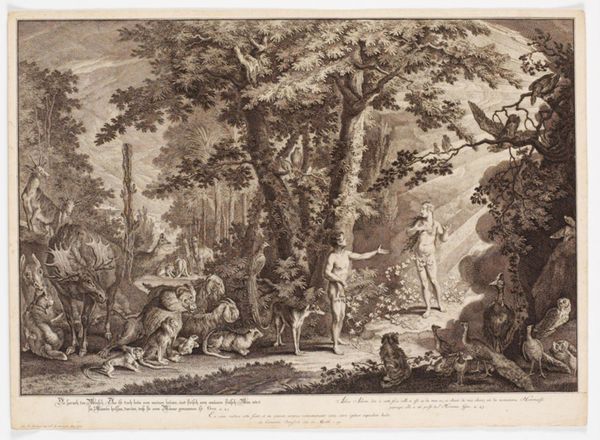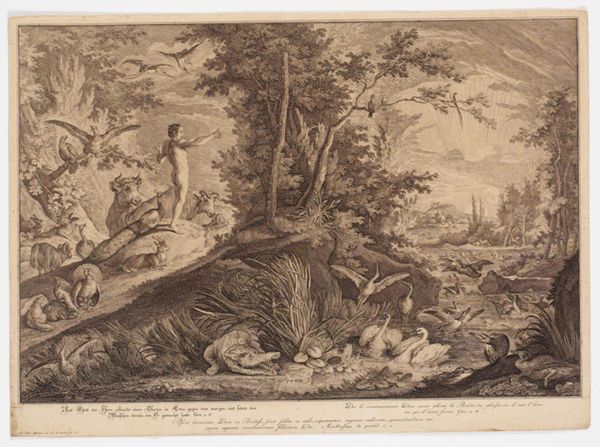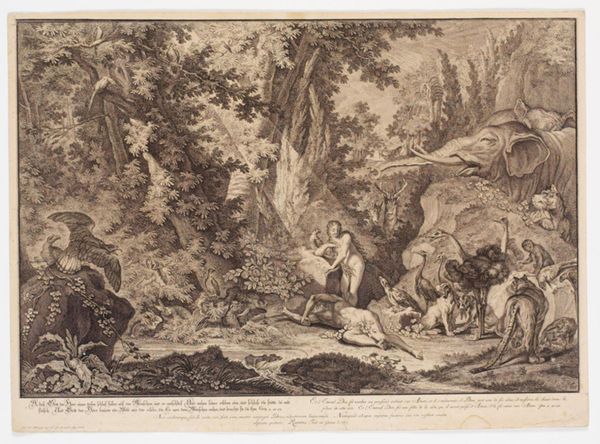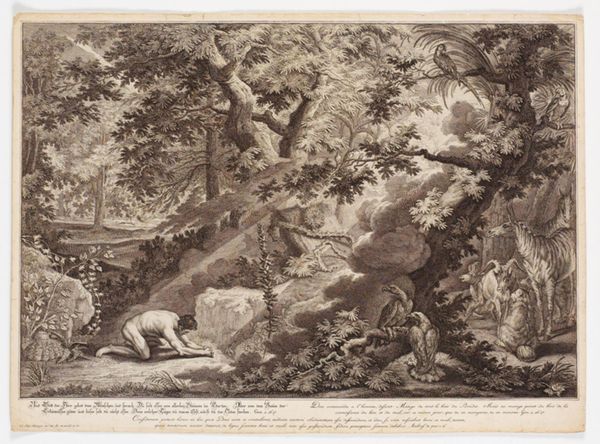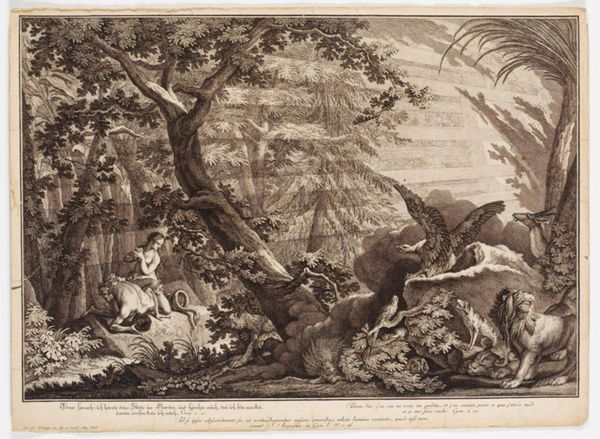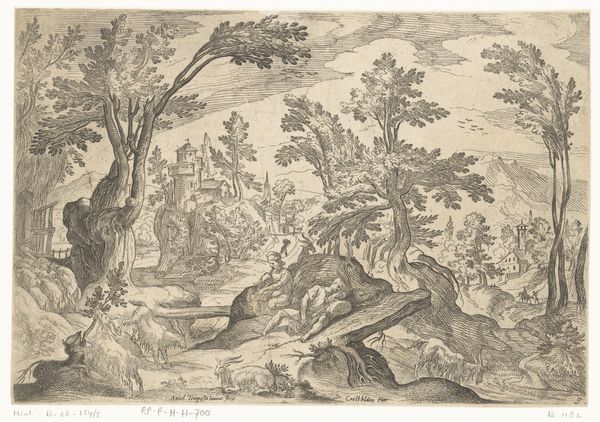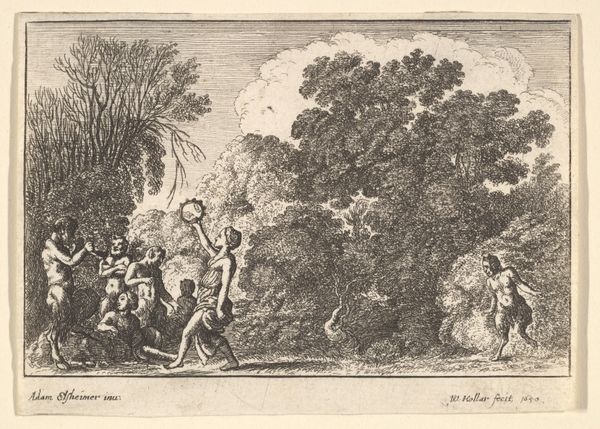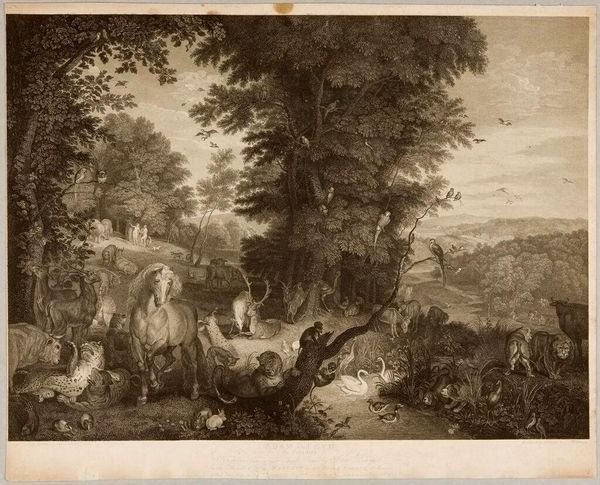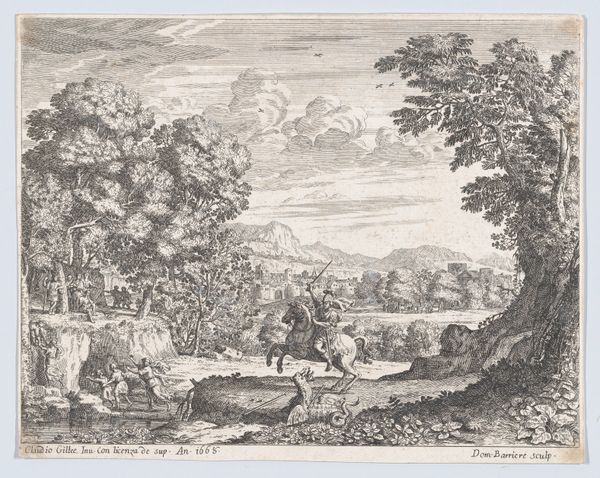
Gud opdager, at Adam og Eva har spist af træet 18th century
0:00
0:00
print, engraving
#
baroque
#
ink painting
# print
#
pencil sketch
#
landscape
#
figuration
#
history-painting
#
engraving
Dimensions: 393 mm (height) x 540 mm (width) (bladmaal)
Editor: This print, “Gud opdager, at Adam og Eva har spist af træet” by Johann Elias Ridinger from the 18th century, depicts God discovering Adam and Eve's transgression. The dramatic landscape contrasts sharply with the figures, making them appear vulnerable. The collection of wild animals amplifies the sense of displacement and disharmony. What historical interpretations can you offer? Curator: Certainly. This image participates in a long history of representing the Fall. But the context of its production matters. Ridinger was known for his animal studies, catering to a market interested in natural history and allegorical narratives. Consider the 'discovery' itself - who is this performance intended for? Editor: I see what you mean. It’s like the picture stages this discovery to align with societal and power structures of the 18th century rather than religious doctrine. Curator: Precisely. God's perspective is absent. What does that absence tell us about how power and authority were perceived and consumed through imagery at that time? Furthermore, observe how the ‘wild’ animals contrast the civil society being created. Editor: Right! The print almost seems to reflect anxieties about societal order and the role of humans in the face of uncontrolled nature. The viewer is aligned with God; like surveillance! Curator: Excellent observation. It makes one consider how art serves as a tool for understanding evolving moral and social anxieties, reflected here via biblical interpretation and presentation. Editor: Thinking about it this way changes everything I assumed about religious art as passive displays. Curator: Exactly. Placing art within history reveals active engagement with politics and values, reshaping them as we understand stories such as this.
Comments
No comments
Be the first to comment and join the conversation on the ultimate creative platform.
